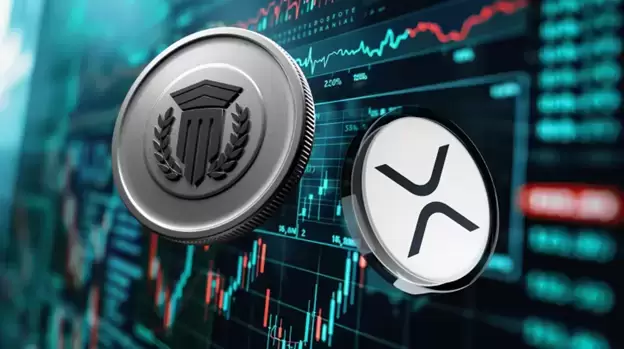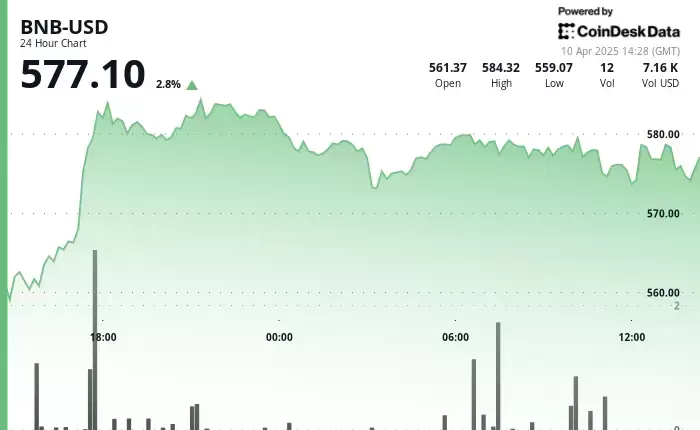 |
|
 |
|
 |
|
 |
|
 |
|
 |
|
 |
|
 |
|
 |
|
 |
|
 |
|
 |
|
 |
|
 |
|
 |
|
加密货币投资越来越受欢迎,您可能想知道不同加密货币的价格;或者代币 X 是否是更好的投资

Key Takeaways
要点
Tokenomics in Crypto 101
加密货币 101 中的代币经济学
As cryptocurrency investment gains popularity, you may be curious about the varying prices of different crypto tokens; or whether token X is a better investment than token Y. With over 9,000 crypto coins and tokens to choose from, you could wonder if there’s a skill that helps users understand the economics of crypto projects.
随着加密货币投资的普及,您可能会对不同加密货币的价格差异感到好奇;或者代币 X 是否比代币 Y 更好。有超过 9,000 种加密货币和代币可供选择,您可能想知道是否有一种技能可以帮助用户了解加密项目的经济学。
Tokenomics in crypto is the essential investment rulebook explaining the monetary asset policies of cryptos: their essence, supply, demand, and their relevance to making investment decisions.
加密货币中的代币经济学是解释加密货币货币资产政策的重要投资规则手册:其本质、供给、需求及其与投资决策的相关性。
What are Crypto Tokenomics?
什么是加密代币经济学?
Tokenomics is a merger of two words: ‘token’ and ‘economics.’ It refers to all elements of a crypto asset that make it valuable and alluring to potential investors. Tokenomics in crypto involves scrutinizing features like the functionality, creation and distribution, allocation policy, objective, and emission schedule of a cryptocurrency.
代币经济学是两个词的合并:“代币”和“经济学”。它指的是加密资产中使其有价值并吸引潜在投资者的所有要素。加密货币中的代币经济学涉及仔细审查加密货币的功能、创建和分配、分配政策、目标和发行时间表等特征。
Tokenomics in crypto, which is a study of how cryptocurrencies work within the broader ecosystem, deals with factors that include elements that influence an asset’s use and value, supply and demand, burn schedules, and incentives. All these are essential qualities you should carefully consider before committing your funds to a select cryptocurrency.
加密货币中的代币经济学是对加密货币如何在更广泛的生态系统中运作的研究,涉及的因素包括影响资产的使用和价值、供应和需求、销毁时间表和激励措施的因素。所有这些都是您在将资金投入选定的加密货币之前应该仔细考虑的基本品质。
Cryptocurrencies run on public blockchains open to everyone, including unscrupulous actors waiting to pounce on new and ignorant investors. By employing crypto tokenomics in the digital asset ecosystem, projects can easily create trust and inhibit the bad actors, thereby creating a robust long-term investment-friendly environment.
加密货币在向所有人开放的公共区块链上运行,包括等待攻击新的无知投资者的不道德行为者。通过在数字资产生态系统中采用加密代币经济学,项目可以轻松建立信任并抑制不良行为者,从而创造一个强大的长期投资友好环境。
Tokenomics in crypto ultimately reveals the actual value of a token, motivates adoption, controls the inflation rate, and promotes sustainable growth. You can learn the different metrics of understanding a crypto project’s tokenomics by studying a project’s whitepaper.
加密货币中的代币经济学最终揭示了代币的实际价值,激励采用,控制通货膨胀率并促进可持续增长。您可以通过研究项目的白皮书来了解了解加密项目代币经济学的不同指标。
Why Crypto Tokenomics Matter in Bitcoin Trading
为什么加密代币经济学在比特币交易中很重要
The role of tokenomics in crypto emanates from the fact that, unlike fiat currencies, there are no government laws and regulations governing cryptocurrencies. Tokenomics, therefore, offer industry players a chance to evaluate other details of cryptocurrencies besides their prices on different exchanges.
代币经济学在加密货币中的作用源于这样一个事实:与法定货币不同,没有管理加密货币的政府法律和法规。因此,代币经济学为行业参与者提供了评估加密货币在不同交易所的价格之外的其他细节的机会。
You can compare the role played by tokenomics to how central banks control monetary policies to create efficient economies while facilitating the growth of their respective ecosystems. Every investor should learn tokenomics in crypto as it plays a critical role in influencing a token’s future price and whether a project has what it takes to attain the targets specified in its roadmap. While a crypto projects team’s expertise, dedication, concept, or funding from venture capitalists and investors are essential factors to consider when analyzing a crypto project’s potential, crypt tokenomics determines an asset’s ultimate success or failure.
您可以将代币经济学所发挥的作用与中央银行如何控制货币政策以创建高效的经济体同时促进各自生态系统的增长进行比较。每个投资者都应该学习加密货币中的代币经济学,因为它在影响代币的未来价格以及项目是否有能力实现其路线图中指定的目标方面发挥着关键作用。虽然加密项目团队的专业知识、奉献精神、概念或来自风险资本家和投资者的资金是分析加密项目潜力时需要考虑的重要因素,但加密代币经济学决定了资产的最终成功或失败。
Crucial Factors in Crypto Tokenomics
加密代币经济学的关键因素
Tokenomics covers a cryptocurrency’s different aspects, including its creation, management, or removal. The most crucial factors you should understand include:
代币经济学涵盖了加密货币的不同方面,包括其创建、管理或删除。您应该了解的最关键因素包括:
Token Distribution: Crypto projects use different methods to distribute coins to prospective users, or no one will use them: they include crypto miners, validators or initial coin offerings (ICOs), and others.
代币分发:加密项目使用不同的方法将代币分发给潜在用户,否则没有人会使用它们:它们包括加密货币矿工、验证器或初始代币发行(ICO)等。
Price Stability: Cryptocurrencies are almost synonymous with price volatility. A project protects price stability by ensuring a steady supply of coins to match the supply levels as people use the coin for its intended purpose. Successful projects have a formula for preventing speculators from buying and selling tokens en masse and curtailing the flow of coins to match the supply levels.
价格稳定性:加密货币几乎是价格波动的代名词。当人们将代币用于其预期用途时,一个项目通过确保稳定的代币供应来匹配供应水平来保护价格稳定。成功的项目有一个公式可以防止投机者大规模买卖代币,并减少代币的流动以匹配供应水平。
Governance: Different projects employ different approaches regarding the creation or minting of coins and how they enter or leave the network. While some projects like Ripple (XRP) hold some tokens in reserve so they can be added later into the ecosystem and others like Augur (REP) employ a hands-off approach, networks like Tether (USDT) ‘burn’ tokens to help regulate the coin’s value.
治理:不同的项目在硬币的创建或铸造以及它们如何进入或离开网络方面采用不同的方法。虽然 Ripple (XRP) 等一些项目持有一些代币储备,以便稍后将其添加到生态系统中,而 Augur (REP) 等其他项目则采用不干涉的方法,但 Tether (USDT) 等网络会“销毁”代币来帮助监管硬币的价值。
Future Adaption: The crypto space is still developing and changes relatively fast, meaning some aspects for which tokens were created may not work in the future. How a crypto project is governed determines how adaptable the network will be as the web grows and matures in an ever-changing ecosystem.
未来适应:加密货币领域仍在发展且变化相对较快,这意味着创建代币的某些方面可能在未来不起作用。随着网络在不断变化的生态系统中发展和成熟,加密项目的治理方式决定了网络的适应性。
Examples of Tokenomics Models
代币经济学模型的示例
Just like no economic model is perfect, there are different cryptocurrency tokenomics models with other pros and cons. The most popular ones are:
就像没有完美的经济模型一样,存在不同的加密货币代币经济模型,各有优缺点。最流行的是:
Deflationary Model
通货紧缩模型
Crypto tokens like Bitcoin (BTC) and Cardano (ADA) operate a deflationary tokenomics model where a set number of coins are created that can never be added. The supply of deflationary currencies stays the same even if the demand increases.
比特币(BTC)和卡尔达诺(ADA)等加密代币采用通货紧缩代币经济模型,其中创建了一定数量的代币,且永远无法添加。即使需求增加,通货紧缩货币的供应也保持不变。
Advantages: The limited supply of coins gives the token value as the demand increases and the supply reduces.
优点:代币的供应有限,随着需求的增加和供应的减少而赋予代币价值。
Disadvantages: The system incentivizes users to hoard tokens as they speculate for better prices.
缺点:该系统会激励用户囤积代币,以期获得更好的价格。
Inflationary Model
通货膨胀模型
Inflationary coins like Ethereum (ETH) and EOS (EOS) run a system that resembles fiat currencies as they have no cap limit. While some cryptos limit token creation annually, others rub on a model that has a schedule set in endlessness.
以太坊 (ETH) 和 EOS (EOS) 等通胀代币运行的系统类似于法定货币,因为它们没有上限。虽然一些加密货币每年限制代币的创建,但其他加密货币则采用了无限时间表的模型。
免责声明:info@kdj.com
所提供的信息并非交易建议。根据本文提供的信息进行的任何投资,kdj.com不承担任何责任。加密货币具有高波动性,强烈建议您深入研究后,谨慎投资!
如您认为本网站上使用的内容侵犯了您的版权,请立即联系我们(info@kdj.com),我们将及时删除。
-

- GameStop(GME)已将其名称添加到采用比特币财政部策略的公司阵容中
- 2025-04-11 01:45:12
- 除了其第四季度的收益报告外,该公司表示,董事会一致批准了将比特币作为财政部资产。
-

- 2025年前7名云挖掘平台的终极列表
- 2025-04-11 01:45:12
- 在技术突破和不断变化的市场需求的推动下,云开采的世界正在迅速发展。
-

-

- Lifedog - 改变硬币的游戏规则
- 2025-04-11 01:40:12
- 在过去的几年中,加密社区看到了许多狗模因硬币。即使是那些在$ shib或$ floki上损失了巨额资金的人,也继续投资于新的炒作。
-

- 随着市场情绪开始从合并转变为准备,加密货币持有人开始重新评估其投资组合
- 2025-04-11 01:35:12
- 这种转变不仅仅是追逐下一个新硬币。它反映了战略的变化。而TRX和XRP随着时间的推移表现出弹性
-

-

-

-


















![super Mario World Koopa Troopa 100%96⭐️ +硬币[AO Vivo] super Mario World Koopa Troopa 100%96⭐️ +硬币[AO Vivo]](/uploads/2025/04/10/cryptocurrencies-news/videos/super-mario-koopa-troopa-coin-ao-vivo/image-1.webp)









































